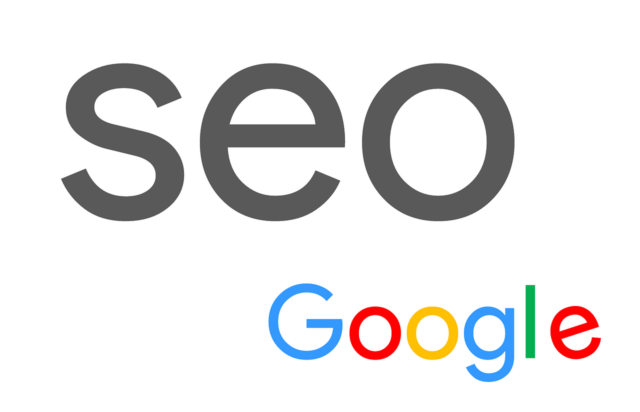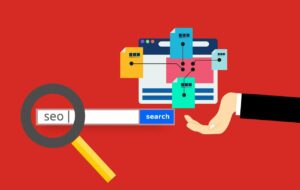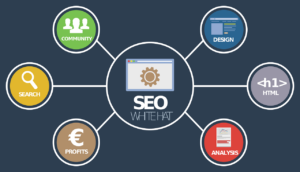- Backlinks Explained: Why Your Backlinks Aren’t Paying Off - April 10, 2024
- Boost Your Agency’s Credibility: A Guide to Online Reputation - April 10, 2024
- URL Slugs for SEO: A Comprehensive Guide - April 10, 2024
Part of the technology behind search engines and search engine optimization consists of the processes of crawling and indexing. But what is crawling and indexing? These are processes that search engines like Google use to discover and organize web pages. They are important to understand for anyone who wants to master SEO, and often when you need to solve an SEO problem too. It’s essential to ensure your site is being crawled and indexed if you want its pages to be discoverable through search engines.
This guide will take you through the ins and outs of SEO crawling and indexing to understand the science behind it. It will help you get a grip on some of the technical principles of SEO and the steps you can take to ensure your site is being crawled and indexed properly.
Dive Into Web Crawling
Crawling is the first part of the process of crawling and indexing. Pages can’t be indexed until they’re crawled. So what is it, what is a crawler, and how do they work?
What is crawling and what’s it for?
Crawling is the way search engines find and index URLs on the internet. Crawlers are tasked with discovering as many pages as possible by regularly checking for new content. They will crawl both URLs they’re already aware of and new ones that haven’t been crawled before. Once a URL has been crawled to discover information about it, that information is passed on to be indexed.
How crawlers discover new pages
But what exactly does a crawler do to find out this information? A crawler (also known as a spider, robot, and several other names) works by moving from link to link. It finds out information about each URL and how they’re connected, then brings that information back to the search engine’s servers.
There are several ways search engines begin to find these pages. Google has an initial list of websites called a seed list that it views as trustworthy and that link out to lots of other sites. Backlinks are followed from site to site. Additionally, sites that have been previously crawled will be crawled again, and crawlers will also look at sitemaps that have been submitted by the owner or administrator of a website. Users can manually submit sitemaps and request crawling and indexing for individual pages.
Challenges faced by crawlers
Crawlers are clever but they can run into problems too. Sometimes they may be unable to crawl content or might be confused by what they find.
One of the issues a crawler can run into is duplicate content. When a site has duplicate content, it can reduce how often the site is crawled. Search engines like Google don’t approve of duplicate content, so if it’s found it could have a negative impact on SEO.
Infinite pages present another problem for crawlers. When a website is too large, it can make it extremely difficult for a crawler to discover all of the pages. It might avoid crawling the whole site for fear of overwhelming it. Too many pages can also slow a crawler down. What’s more, a sprawling site may have bad architecture, making it difficult for crawlers to find pages.
Restricted access will also affect crawling. This can include pages being blocked in the site’s robot.txt file, nofollow links, or noindex tags. These things tell crawlers not to look at certain URLs, meaning they won’t be crawled or indexed.
How to optimize for efficient crawling
Site owners can take steps to optimize for efficient crawling, helping search engines discover their pages.
The first step is to check the site’s robots.txt file. The robots.txt file tells search engines which parts of the site should and shouldn’t be crawled. Understanding it and how it works can help you take control of crawling. You can use robots.txt to block some pages from being crawled, such as duplicate content or non-public pages.
Using proper URL structures helps to ensure your site is crawled sufficiently too. The URL structure is the different parts that make up the URL. When creating URLs for different pages, they should help to give your site clear structure and organization.
Finally, make sure you keep an updated sitemap. Your sitemap tells Google about the structure of your site and which pages are on it. Ensuring search engines have an up-to-date sitemap for your website will mean that you have more control over which pages are crawled or not crawled.
Deep Dive Into Indexing
Now that Google has found your website’s pages, what happens next? After pages have been crawled, the next step is indexing. However, not all pages will be indexed just because they have been crawled.
What happens after crawling?
Once the search engine’s crawlers have discovered the site’s pages, the next thing to do is save important information. After the page has been read, the information about it is organized and stored so that it can quickly be presented in a search query. The search engine will look at all of the content on the page, including text, images, and video, and store it in a database so that it can be served up later. The indexer analyzes each page to determine what information should be stored and what shouldn’t.
How search engines decide what information to store
Indexers don’t index all of the pages that crawlers discover. They also don’t store every piece of information that might be found on an individual page. That means they need methods to decide which information is important enough to store.
Firstly, the indexer has to determine whether the page should be indexed. There are a number of reasons a URL might not be indexed. These range from being blocked by robots.txt to the website being too new. Then the indexer needs to analyze the content on the page, looking at title tags, images, links, and more. This helps it to determine which information should be stored and what should be ignored.
Factors affecting indexing
There are multiple factors that affect whether a page is indexed by Google. Each factor is important to be aware of so that you can ensure the pages on your site are indexed when you need them to appear in search engine results.
The quality and relevance of a page will affect its indexing. Search engines want to know what’s on the page and what it’s about. This helps them to provide the most relevant results when someone searches for a term. They also want to make sure they’re providing quality information to users. So they will also check the page to see if the information is not just relevant but also provides quality content that’s useful and helpful to the user.
The overall reputation of the site is also something that makes a difference in indexing. New websites start off with very little reputation, but as they grow they can start to show search engines that they have authority. To do this, your site will need to have quality content and other elements indicating that it can be trusted. This includes things like quality backlinks that affect your domain authority.
Indexing can be negatively impacted by technical issues and errors. If you’re not very familiar with SEO principles and best practices, these can be tricky to navigate. One way to determine potential errors is through the use of Google Search Console. It will tell you which pages haven’t been indexed and why so that you can determine which steps to take to fix the problem.
Methods to improve and ensure proper indexing
Site owners can improve and ensure proper indexing using a range of methods. All of the steps you can take essentially come down to making sure you have a quality website that provides relevant information for users.
You can begin by optimizing your content and ensuring it’s original. Duplicate content will have a negative impact on your site, whether it’s duplicated on your own site or it’s the same as content on another site. Original content will provide your site visitors with much more value, so search engines will see it much more favorably. Optimizing your content should involve things like using heading tags and alt text to give indexers important information about what’s on the page.
Mobile optimization is a must in today’s digital world. With more people than ever using mobile devices on a daily basis over desktop computers, it’s crucial that you use responsive design. Your site should adapt to different devices, operating systems, browsers, and screen sizes. It should be easy to use and fast to load.
Speaking of speed, a fast loading speed is an important factor for proper indexing too. If your site isn’t fast, pages might not be crawled or indexed. Google can decide not to index pages if it thinks it might overload your site’s server or if it’s taking too long. Security is essential too, so make sure you have an SSL certificate to protect your site.
The Relationship Between Crawling and Indexing
Now you know that crawling comes first and then URLs are indexed by search engines. But what exactly is the relationship between the crawl and index functions?
Indexing can’t occur until crawling has been carried out. Once the crawler has discovered the pages, it can pass them to the indexer to begin analyzing them. When the page has been crawled and indexed, the search engine can take different ranking factors into account when serving it up in search engine results.
A site needs to be crawlable for its pages to be indexed. And the pages need to be indexed to show up in search engine results. So if you want to ensure your site is discoverable online, you have to start with crawlability and then look at indexability.
Indexing also contributes to the crawling process. Some parts of indexing help to determine how a search engine crawls. When a page is indexed, more links can be extracted for the crawler to inspect, so that even more crawled pages can be indexed.
The Role of SEO in Crawling and Indexing
As you can see, crawling and indexing are pretty important when it comes to search engine optimization. Without crawlers and indexing, web pages won’t be discovered and remembered by search engines and can’t be delivered on search engine results pages. So if you want to practice good SEO, it’s fundamental to start with whether your URLs are being crawled and indexed. It’s not just about making sure every single page on your site is indexed, either. Sometimes there are pages you don’t want to be indexed, so you have to pay attention to those too.
If your website isn’t crawled and indexed properly, you can have various SEO problems. Your site won’t show up in search engine results at all if none of its pages have been indexed. In other words, your site won’t rank in search engine results until its pages have been crawled and indexed. A brand-new site won’t immediately be crawled and indexed, but its pages should begin to be indexed before long. As you maintain your website, it will become more visible over time.
Many SEO ranking factors affect the crawlability and indexability of your site. For example, internal and external site links both help to improve the crawlability of your site. They can also give your site more authority and relevance, making Google more likely to serve them up in search engine results. Internal links act as a roadmap, showing crawlers which way to go. External links can also help crawlers discover your site and can give it more relevance and authority when the links come from quality sites.
The quality of your content is another factor affecting both SEO and indexability. Good quality content is more likely to be indexed properly. With the right signals telling the indexer about the content, the search engine is more likely to see it as relevant, quality content to provide to users. Original, valuable content with good formatting, headings, and structure is easier for crawlers and indexers to understand.
Technical issues are also strongly linked to both crawling/indexing and SEO. Technical problems such as a slow site can prevent indexing, and they can also affect your SEO rankings. If your site is slow or isn’t mobile-friendly, it won’t be favored by either search engines or users.
Frequently Asked Questions (FAQs) About Crawling and Indexing
How do I know if my site has issues with crawling and indexing?
You don’t always know right away if your site is being crawled and indexed properly, especially if you’re not checking regularly. That’s why it’s important to be proactive and understand how to monitor crawling and indexing. A simple way to look for indexing issues is to use the “site:” tag to search through your website on Google. Simply put your URL after the tag and search for pages you want to find to see if they appear in the results. You can also use Google Search Console or use a web crawler such as Sitebulb to see how crawlers search your site. A server log analysis will also provide you with plenty of information on how Google is crawling your site.
How do I improve crawlability and indexability for my site?
If you want to improve crawlability and indexability, you should carry out a technical SEO audit. You can use various tools to tell you about any technical issues you might be dealing with and what improvements you can make. Google Search Console is a free tool that can help you get started. You can use Google Search Console to submit a sitemap for your website, check which pages are crawled and indexed, check the performance of your site, and more. Other Google tools such as PageSpeed Insights can help you learn more about how your site is performing. In addition to Google tools, you can find tools like SEMrush to help you carry out SEO audits.
Consider using a professional service to carry out your technical SEO audit and make recommendations for how you can improve crawlability, indexability, and your overall SEO strategy.
How important is regularly adding content to my site?
Publishing new content to your site on a regular basis is excellent for better crawlability and indexability. However, it’s important to ensure your content is relevant, valuable, and of good quality. Simply adding lots of extra pages to your site with no clear reason or thought as to how helpful it will be for your audience is unlikely to be the best move. Be sure to avoid duplicate content too.
Wrapping Up
Crawling and indexing are two fundamental processes that are inextricably linked with SEO and search engine visibility. Without crawling and indexing, your website won’t show up in search engine results. Ensuring your website is crawlable and indexable is a key part of technical SEO and your overall SEO strategy.
Get started with improving the crawlability and indexability of your site with free SEO audits from MySiteAuditor. By embedding our free tool on your site, you can immediately learn more about your site’s performance and how to make it better.


